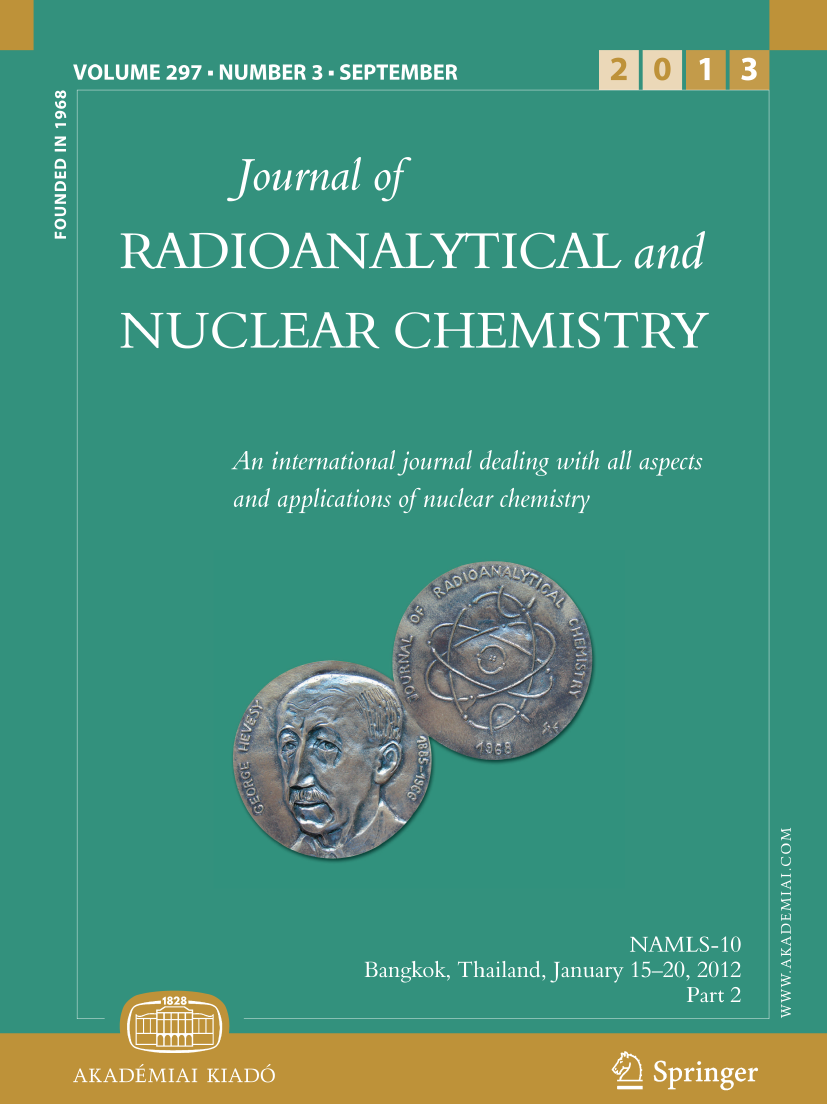Optimizing sol–gel surrogate nuclear explosive debris for laboratory analysis applications
IF 1.5
3区 化学
Q3 CHEMISTRY, ANALYTICAL
Journal of Radioanalytical and Nuclear Chemistry
Pub Date : 2025-02-12
DOI:10.1007/s10967-025-09988-y
引用次数: 0
Abstract
Surrogate nuclear explosive debris (SNED) is critical to post-detonation nuclear forensic science. We report a systematic study optimizing the dissolution characteristics of sol–gel based SNED. Total carbon analyses of sol–gels indicate elimination of unreacted carbon from residual ethyl groups when samples are annealed above 500 °C. Sol–gel SNED annealed between 600 and 800 °C dissolves similarly to Trinitite when using both HCl/HF and HNO3/HF based dissolution approaches. Taken together, these data demonstrate the ability to produce highly tunable, realistic SNED samples that can be employed to support future laboratory analysis applications.

优化溶胶-凝胶替代核爆炸碎片实验室分析应用
替代核爆炸碎片(snd)是核爆后核法医科学的重要组成部分。我们报道了一项系统的研究,优化了溶胶-凝胶基SNED的溶解特性。溶胶-凝胶的总碳分析表明,当样品在500°C以上退火时,残余乙基中未反应的碳被消除。在600 - 800°C之间退火的溶胶-凝胶snd,当使用HCl/HF和HNO3/HF溶解方法时,溶解与三合石相似。综上所述,这些数据证明了生产高度可调的、真实的snd样品的能力,这些样品可以用于支持未来的实验室分析应用。
本文章由计算机程序翻译,如有差异,请以英文原文为准。
求助全文
约1分钟内获得全文
求助全文
来源期刊
CiteScore
2.80
自引率
18.80%
发文量
504
审稿时长
2.2 months
期刊介绍:
An international periodical publishing original papers, letters, review papers and short communications on nuclear chemistry. The subjects covered include: Nuclear chemistry, Radiochemistry, Radiation chemistry, Radiobiological chemistry, Environmental radiochemistry, Production and control of radioisotopes and labelled compounds, Nuclear power plant chemistry, Nuclear fuel chemistry, Radioanalytical chemistry, Radiation detection and measurement, Nuclear instrumentation and automation, etc.

 求助内容:
求助内容: 应助结果提醒方式:
应助结果提醒方式:


